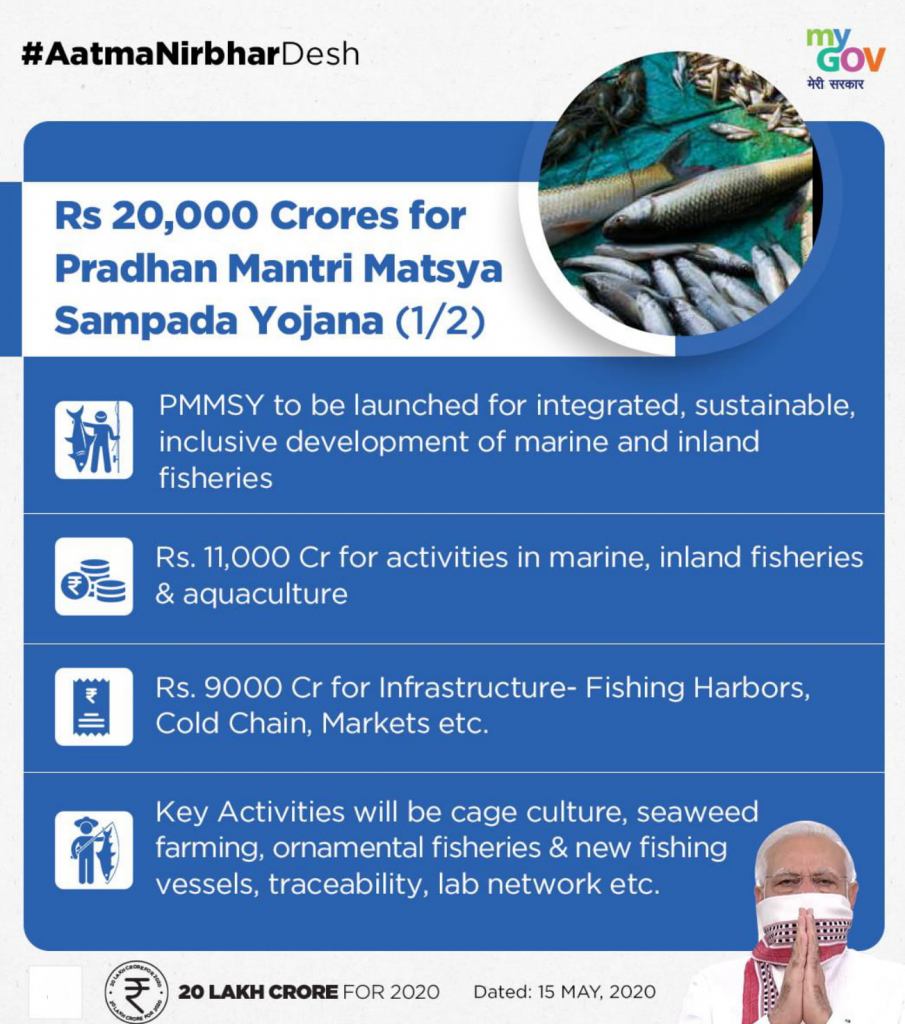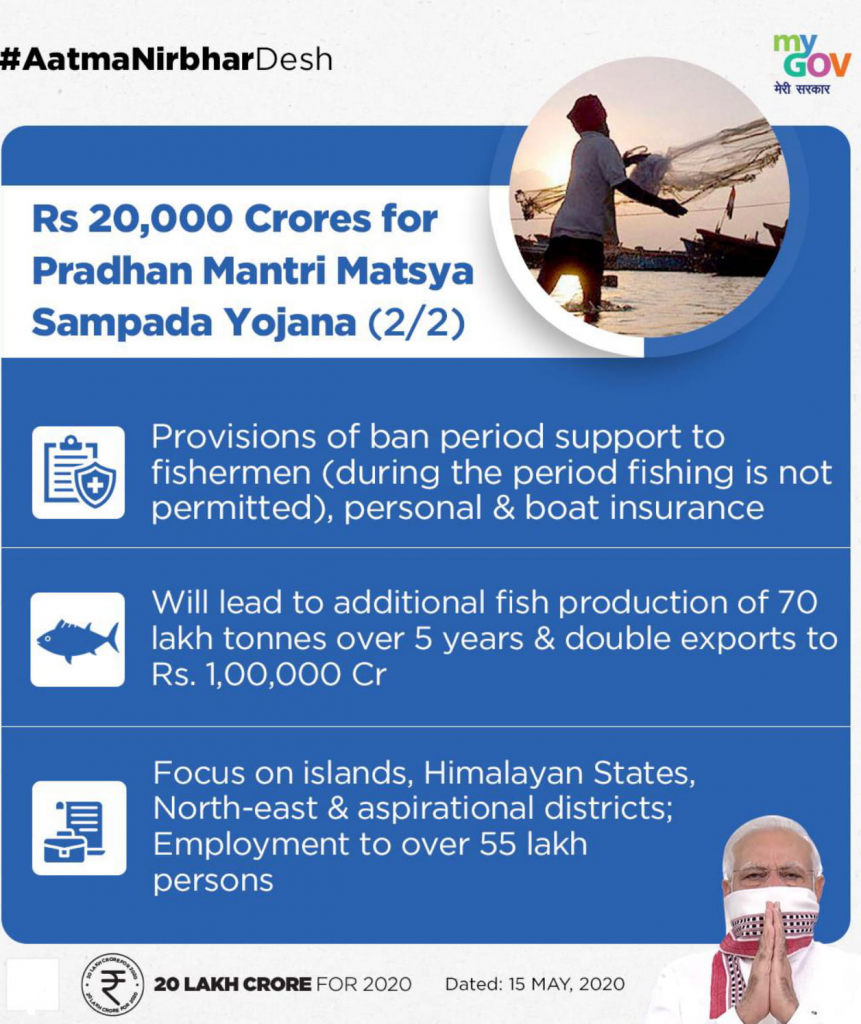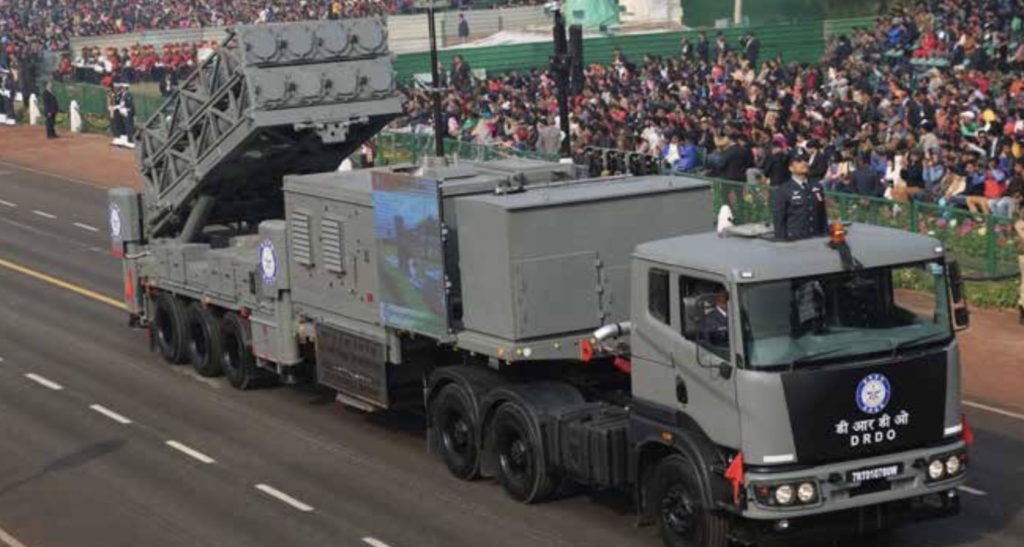Contents
- PM-KISAN
- Pradhan Mantri Matsya Sampada Yojana (PMMSY)
- Medium Range Surface to Air Missile (MRSAM)
- Srinivasa Ramanujan Ji
PM-KISAN
Focus: GS 2;Welfare schemes for vulnerable sections of the population by the Centre and States and the performance of these schemes; mechanisms, laws, institutions and Bodies constituted for the protection and betterment of these vulnerable sections.
Why in News?
PM to release next instalment under PM-KISAN on 25 December
About PM KISAN
- PM Kisan (under Ministry of Agriculture and Farmers Welfare) is a Central Sector scheme with 100% funding from Government of India
- It has become operational from 1.12.2018.
- PM-KISAN Scheme completes one year on February 24, 2020.
- So far, over 8 crore 46 lakh farmers covered under Pradhan Mantri Kisan Samman Nidhi.
- Under the scheme an income support of 6,000/- per year in three equal installments will be provided to small and marginal farmer families having combined land holding/ownership of upto 2 hectares.
- The Scheme initially provided income support to all Small and Marginal Farmers’ families across the country, holding cultivable land upto 2 hectares.
- Its ambit was later expanded w.e.f. 01.06.2019 to cover all farmer families in the country irrespective of the size of their land holdings.
- Definition of family for the scheme is husband, wife and minor children.
- State Government and UT administration will identify the farmer families which are eligible for support as per scheme guidelines.
- The fund will be directly transferred to the bank accounts of the beneficiaries.
- The first instalment for the period 1.12.2018 to 31.03.2019 is to be provided in the financial year itself.
- There are various Exclusion Categories for the scheme.
About Significance of the PM-KISAN
- Around 12 crore small and marginal farmer families are expected to benefit from this. It would not only provide assured supplemental income to the most vulnerable farmer families, but would also meet their emergent needs especially before the harvest season.
- It would pave the way for the farmers to earn and live a respectable living.
About Similar Programmes by States
- Bhavantar Bhugtan Yojana in Madhya Pradesh was sought to provide relief to farmers by providing the differential between MSPs and market prices.
- The Rythu Bandhu scheme of the Telangana provides ₹4,000 per acre for every season to all the farmers of the state. Similar initiatives have also be framed in Jharkhand and Odisha.
- Krushak Assistance for Livelihood and Income augmentation (KALIA) of Odisha is more complicated in design and implementation. It commits to give Rs 5,000 per SMF, twice a year, that is Rs 10,000 a year.
Extra Info
About Benefits of Direct Cash Transfers
- Immediate impact on reducing hunger and rural poverty.
- Help households to overcome credit constraints and manage risk. This can increase productive investment, increase access to markets and stimulate local economies.
- Income support can be used to make a repayment or at least activate a bank account which can then receive a loan.
- Increase investment in agricultural inputs, including farm implements and livestock.
- Serve as an important complement to a broader rural development agenda, including a pro-poor growth strategy focusing on agriculture.
PRADHAN MANTRI MATSYA SAMPADA YOJANA (PMMSY)
Focus: GS 2;Welfare schemes for vulnerable sections of the population by the Centre and States and the performance of these schemes; mechanisms, laws, institutions and Bodies constituted for the protection and betterment of these vulnerable sections.
Why in News?
Pradhan Mantri Matsya Sampada Yojana (PMMSY) proves to be a Boon for fishermen across the country
About Fisheries Sector in India
- The fisheries sector has been recognized as a powerful income and employment generator as it stimulates growth of a number of subsidiary industries and is a source of cheap and nutritious food, at the same time it is an instrument of livelihood for a large section of economically backward population of the country.
- Fishery sector occupies an important place in the socio-economic development of the country.
- Fisheries is a fast-growing sector in India, which provides nutrition and food security to a large population of the country besides providing income and employment to more than 28 million people.
- India is the second largest fish producing country in the world accounting for 7.56% of global production and contributing about 1.24% to the country’s Gross Value Added (GVA) and over 7.28% to the agricultural GVA.
- Fisheries and aquaculture continue to be an important source of food, nutrition, income and livelihood to millions of people.
- Fish being an affordable and rich source of animal protein, is one of the healthiest options to mitigate hunger and nutrient deficiency.
- The sector has immense potential to double the fish farmers’ income by 2022, as envisioned by the Government of India.
- Hence it is essential that sustained and focused attention is given to the fisheries sector through policy and financial support to accelerate its development in a sustainable, responsible, inclusive and equitable manner.
About PMMSY
- A scheme to bring about Blue Revolution through sustainable and responsible development of fisheries sector in India” with highest ever investment of Rs. 20050 crores in fisheries sector comprising of Central share of Rs. 9407 crore, State share of Rs 4880 crore and Beneficiaries contribution of Rs. 5763 crore.
- PMMSY (Department of Fisheries) will be implemented over a period of 5 years from FY 2020-21 to FY 2024-25 in all States/Union Territories.

- The PMMSY will be implemented as an umbrella scheme with two separate Components namely (a) Central Sector Scheme (CS) and (b) Centrally Sponsored Scheme (CSS).
- Under the Centrally Sponsored Scheme (CSS) Component, an investment of Rs. 18330 crores has been envisaged, which in turn is segregated into Non-beneficiary oriented and Beneficiary orientated sub-components/activities under the following three broad heads:-
- Enhancement of Production and Productivity
- Infrastructure and Post-harvest Management
- Fisheries Management and Regulatory Framework

- A well-structured implementation framework would be established for effective planning and implementation of PMMSY.
- This inter-alia includes creation of State Programme Units in all States/UTs & District Programme Units and Sub-District Programme Unit in high fisheries potential districts.
- The Intended Beneficiaries of PMMSY are Fishers, Fish farmers, Fish workers, Fish vendors, SCs/STs/Women/Differently abled persons, Fisheries cooperatives/Federations, FFPOs, Fisheries Development corporations, Self Help Groups (SHGs)/Joint Liability Groups (JLGs) and Individual Entrepreneurs.
Aims and objectives of PMMSY
- Harnessing of fisheries potential in a sustainable, responsible, inclusive and equitable manner
- Enhancing of fish production and productivity through expansion, intensification, diversification and productive utilization of land and water
- Modernizing and strengthening of value chain – post-harvest management and quality improvement
- Doubling fishers and fish farmers incomes and generation of employment
- Enhancing contribution to Agriculture GVA and exports
- Social, physical and economic security for fishers and fish farmers
- Robust fisheries management and regulatory framework.
MEDIUM RANGE SURFACE TO AIR MISSILE (MRSAM)
Focus: GS 3; Science and Technology- developments and their applications and effects in everyday life.
Why in News?
Successful Maiden Launch of MRSAM
About DRDO’s MRSAM
- Defence Research and Development Organisation (DRDO) achieved a major milestone with the maiden launch of Medium Range Surface to Air Missile (MRSAM), Army Version from Integrated Test Range, Chandipur, off the Coast of Odisha.
- IAI will reportedly supply India with 2,000 missiles capable of intercepting enemy aircraft and missiles within a 70-kilometer range.

- The missile completely destroyed a high speed unmanned aerial target which was mimicking an aircraft with a direct hit.
- Army version of MRSAM is a surface to Air Missile developed jointly by DRDO, India and IAI, Israel for use of the Indian Army.
- MRSAM Army weapon system comprises of Command post, Multi-Function Radar and Mobile Launcher system.
- The complete Fire Unit has been used during the launch in the deliverable configuration.
- The team from the users i.e. Indian Army also witnessed the launch. Number of range instruments such as Radar, Telemetry and Electro-Optical Tracking System were deployed and captured the complete mission data, validating the weapon system performance including the destruction of the target.
- The proposed MRSAM, to replace the old Pechora missiles which currently in service of Indian Defense Forces.
About Combat Capability of MRSAM
- The MRSAM missile is equipped with an advanced active radar radio frequency (RF) seeker, advanced rotating phased array radar and a bidirectional data link.
- The RF seeker, located in the front section of the missile, is used to detect moving targets in all weather conditions.
- The MRSAM surface-to-air missile is powered by a dual-pulse solid propulsion system developed by DRDO.
- The propulsion system, coupled with a thrust vector control system, allows the missile to move at a maximum speed of Mach 2.
- The weapon has the ability to engage multiple targets simultaneously at ranges of 70km.
SRINIVASA RAMANUNJAN Ji
Focus: GS 3;Achievements of Indians in science & technology; indigenization of technology and developing new technology.
Why in News?
International Science Literature Festival – VIGYANIKA organized to mark the birth anniversary of Srinivasa Ramanujan
About Srinivasa Ramanujan Ji
- Born on December 22nd,1887 in Erode, Tamilnadu, the day is celebrated in his memory as the National Day of Mathematics.
- In 2012, then prime minister Manmohan Singh declared 22 December as National Mathematics Day.
- National Mathematics Day is celebrated every year on December 22, honoring the birth anniversary of mathematical genius Srinivasa Ramanujan.
- The main objective behind celebrating the day is to raise awareness among people about the importance of mathematics for the development of humanity.
- Famous British mathematician Godfrey Harold Hardy acknowledged his talent in 1913 and invited Ramanujan to Cambridge.
- Ramanujan made significant contributions and worked on elliptical functions to analytic number theories.
- He worked on the whole number division, hypergeometric series and the constant of Euler as well.
- He published his papers in English and European journals and was elected to the Royal Society of London in 1918.
- Before he died at the age of just 32 from tuberculosis, he had already given the world around 3500 mathematical formulae that scientists have still not been able to completely prove.
- He discovered his theory of divergent series, worked out the Riemann series, the elliptic integrals, hypergeometric series, and the functional equations of the zeta function.
- 1729 or the Ramanujan-Hardy number or the Taxicab number is unique in itself as it is the smallest no.

- The legendary mathematician Srinivasa Ramanujan made extraordinary contributions to mathematical analysis, number theory, infinite series & continued fractions.
- From compiling over 3900 mathematical results and equations to getting discoveries named after him, his numerous assertions in mathematics opened up new vistas of mathematical research.
- He died after a long illness on 26 April 1920, in India.
- National Mathematics Day is celebrated in various schools, colleges, universities, and educational institutions in India. Even the International Society UNESCO (United Nations Educational, Scientific and Cultural Organisation) and India had agreed to work together to spread mathematics learning and understanding. Along with this, various steps were taken to educate the students in mathematics and spread knowledge to the students and learners all over the world.



